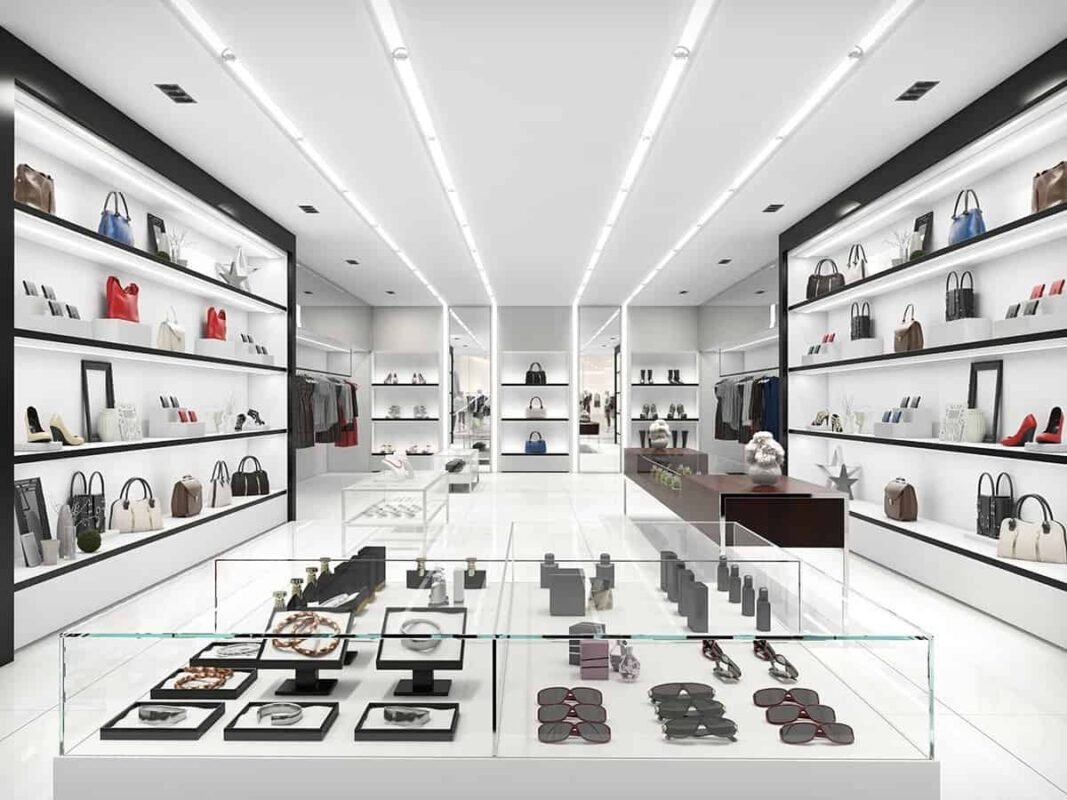Essential Elements of Effective Showroom Design: Insights from ShopConcept

Creating a memorable showroom is about more than just aesthetics. It requires a balance of form, function, and brand identity that speaks to your target audience. At ShopConcept, we believe that every showroom should be a physical extension of your brand, offering customers an immersive experience that drives engagement and sales. Here, we share key insights into the essential elements of effective showroom design to help you create a space that stands out.
1. Clear Brand Representation
Your showroom design should be a direct reflection of your brand’s identity. Everything from the color palette to the furniture selection should communicate who you are as a brand. For instance, a luxury brand may opt for high-end materials like marble and glass, while a tech-focused company may choose sleek, modern fixtures with interactive displays. At ShopConcept, we start by understanding your brand’s core values and translate them into the visual and spatial aspects of the showroom interior design.
Tip:
Be consistent with your brand’s colors, fonts, and overall aesthetic across the showroom to reinforce brand recognition.

2. Functional Layout and Flow
An effective showroom interior design must guide customers naturally through the space, highlighting key products and encouraging interaction. We focus on creating a layout that is both functional and inviting. Products should be arranged in a way that’s easy for customers to browse, with enough space to move freely.
Strategic product placement — such as high-margin items at eye level or near the entrance — ensures that your best offerings get noticed. We also consider customer behavior patterns to determine the best traffic flow, making it easier for customers to navigate and engage with your products.
Tip:
Create focal points within the showroom by grouping related products together to encourage upselling or cross-selling opportunities.

3. Effective Lighting
Lighting plays a crucial role in setting the mood and highlighting products in your showroom design. A well-lit space not only makes products look more appealing but also enhances the overall customer experience. We use a combination of ambient, task, and accent lighting to ensure that each area of the showroom is illuminated effectively.
For instance, task lighting may be used for product displays that need focused attention, while accent lighting can be utilized to draw attention to new arrivals or promotional items.
Tip:
Use warm lighting to create a welcoming atmosphere, and adjustable spotlights to highlight specific products or sections.

4. Interactive and Immersive Experiences
Modern showroom interior design goes beyond static displays. Customers today expect an interactive experience where they can engage with products before making a decision. This can be achieved through digital screens, product demonstrations, or virtual reality setups that allow customers to visualize products in different settings.
At ShopConcept, we incorporate interactive elements that not only showcase your products but also immerse customers in your brand story. This creates a memorable experience that customers are more likely to talk about and share.
Tip:
Integrate technology such as touchscreen displays or virtual fitting rooms to create a more dynamic shopping experience.

5. Attention to Detail in Material Selection
Materials play a vital role in shaping the overall look and feel of your showroom design. At ShopConcept, we believe that every material should align with your brand’s identity while being functional and durable. Whether it’s the flooring, wall treatments, or furniture, the materials you choose contribute to the sensory experience of your showroom.
For example, a sustainable brand may opt for eco-friendly materials like bamboo or reclaimed wood, while a high-end fashion showroom might use plush fabrics and polished metals for a luxurious feel.
Tip:
Choose materials that are not only visually appealing but also durable enough to withstand high foot traffic.

6. Adaptability and Flexibility
Retail trends and customer preferences change quickly, and so should your showroom. A flexible showroom interior design allows for easy modifications when new products arrive or when you want to refresh the space. Modular furniture, adjustable shelving, and movable partitions can help you adapt the space to suit different needs over time.
At ShopConcept, we design showrooms with the future in mind, ensuring that they can evolve without requiring a complete overhaul every time a change is needed.
Tip:
Consider modular displays that can be easily rearranged to showcase seasonal collections or new product launches.

7. Strategic Use of Signage
Signage is an often-overlooked element of showroom design, but it plays a critical role in guiding customers through the space and informing them about product features or promotions. Well-placed signs can help direct traffic, explain product benefits, and draw attention to special offers.
At ShopConcept, we recommend using a mix of digital and traditional signage to create a more engaging customer experience. Interactive digital screens, for example, allow customers to browse product information on demand.
Tip:
Use bold, readable fonts and keep messaging clear and concise to ensure that signage enhances rather than overwhelms the space.

Conclusion
An effective showroom interior design is one that not only looks visually appealing but also functions as a powerful sales tool. From clear brand representation to interactive elements and strategic layouts, the right showroom design can transform your space into a destination that engages customers and boosts sales.
At ShopConcept, we specialize in creating dynamic showrooms that elevate brands and deliver results. If you’re ready to transform your showroom, contact us today to learn how we can help you craft the perfect space.
4o
